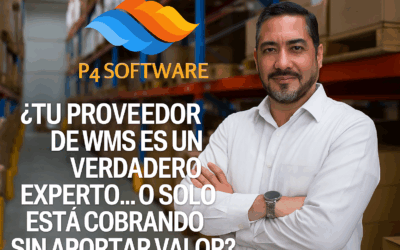Embracing Change: The Case for Migrating from Traditional Systems to Modern Cloud-Based Systems
In the dynamic world of enterprise technology, many organizations remain tied to traditional software systems. This attachment, often born of fear, centers around myths about long implementation times and the trepidation of adopting lesser-known modern solutions. However, this caution may be misplaced, especially when considering the efficiency and ease of implementation of modern cloud-based storage and accounting systems.
The Dilemma of Traditional Systems
Traditional systems, which have been part of organizations for decades, are perceived as the backbone of many businesses. They are seen as safe and reliable, although old-fashioned. The main fear associated with moving away from these systems is the long and complex transition period that is anticipated. There is also a deep-rooted anxiety about taking the step into the unknown, especially when considering newer, less established systems.
Modern Cloud Solutions: A Paradigm Shift
Contrary to fears surrounding them, modern cloud-based systems are designed for quick and efficient deployment. These systems harness the power of cloud computing, offering a level of flexibility and scalability that traditional systems cannot match. Implementing cloud-based storage and accounting systems is often a streamlined process, significantly reducing the time and resources required compared to traditional software.
Addressing Fear of the Unknown
Hesitancy to adopt modern cloud solutions often stems from their relative newness compared to established traditional systems. While traditional systems come with a sense of familiarity, this comfort often overlooks their limitations in terms of scalability, efficiency, and integration with other modern tools. In contrast, cloud-based systems, although lesser known, are built with the latest technology, offering robust security, real-time data processing, and seamless integration capabilities.
The Risks of Staying with Traditional Systems
Sticking to traditional systems can lead to operational stagnation. These systems typically require more maintenance, are less efficient, and cannot keep pace with the evolving technology landscape. As competitors adopt more agile and cost-effective cloud solutions, companies that rely on traditional systems risk being left behind, both in terms of operational efficiency and technological relevance.
The Strategic Advantage of Modern Systems
Migrating to a cloud-based system is more than a technology upgrade; It is a strategic business decision. These systems offer real-time data analysis, better collaboration, and greater operational flexibility. Adopting modern cloud solutions can lead to improved decision making, better resource management, and a significant competitive advantage.
Conclusion
The transition from traditional systems to modern cloud-based systems, while daunting, is a necessary step for businesses looking to thrive in today's digital landscape. The advantages of modern systems – ease of implementation, scalability, efficiency and technological power – far outweigh the initial fears and uncertainties. It is time for businesses to let go of apprehensions tied to traditional systems and embrace the potential of modern cloud technology for a more dynamic and successful future.

Related Articles
The Critical Importance of Blind Receiving in Modern Warehouses Using P4 Warehouse WMS
By understanding and harnessing the power of blind receiving with P4 Warehouse WMS, your warehouse can reach new heights of operational excellence. For more information on how P4 Warehouse can revolutionize your warehouse management, contact us today.
8 Reasons Why Your Company Needs a Cloud-Based WMS
A cloud-based Warehouse Management System (WMS) is a smarter, more scalable, and more secure alternative. Here are eight ways a cloud-based WMS transforms your warehouse into a high-performance and resilient operation.
Is your WMS provider a true expert… or are they just charging money without adding value?
In today's competitive logistics world, your warehouse management system (WMS) isn't just a tool: it's the control tower for your entire operation. But here's an uncomfortable truth: many companies sell WMS solutions without the knowledge or support...
Why Are Businesses Migrating to P4 Warehouse's Cloud-Native WMS?
Your WMS should generate profits—not be a bottleneck. You already have a solid operation: good equipment, quality products, and ever-growing demand. But there's one thing constantly holding you back: the warehouse. Shipping delays. Out-of-stock products....





